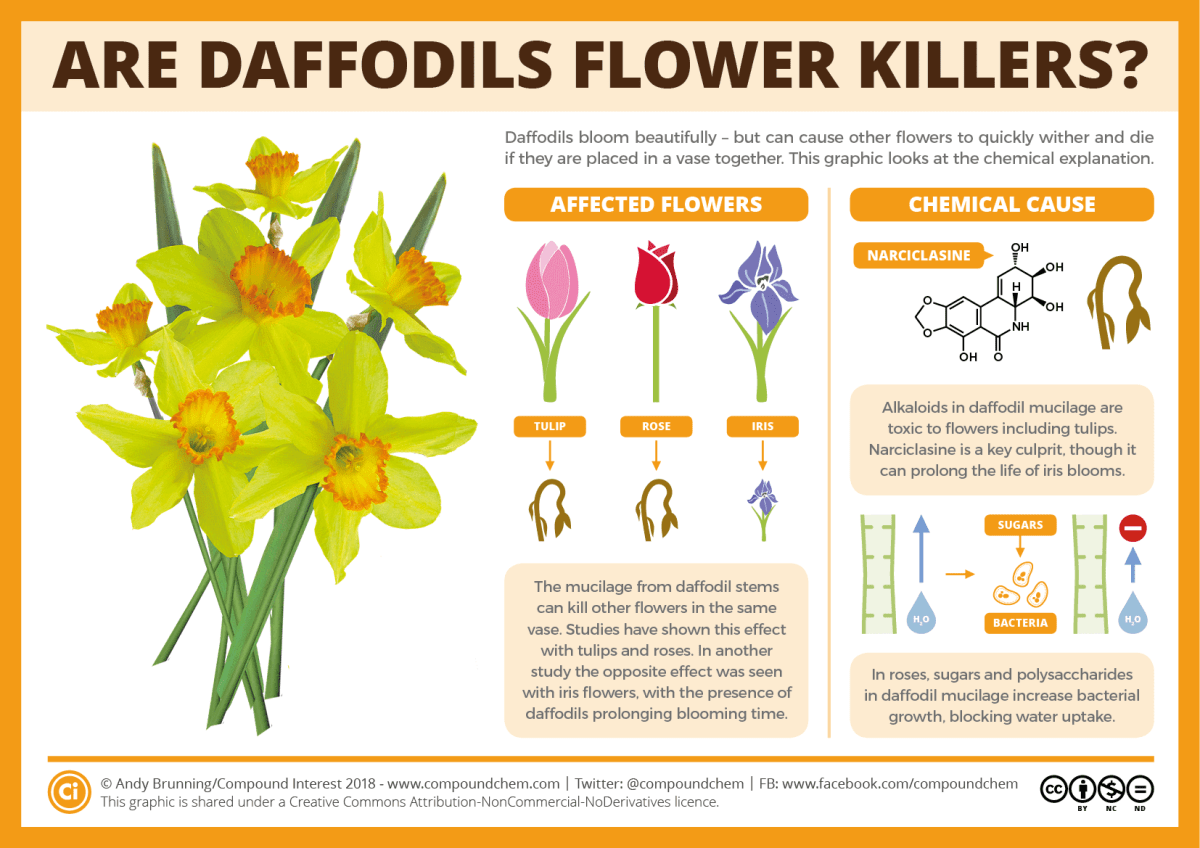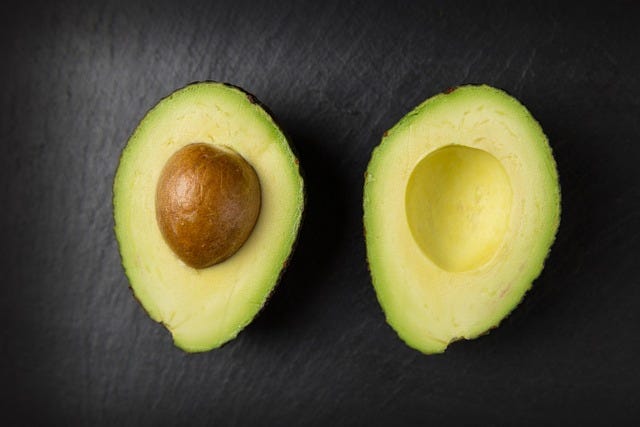Hello and welcome to another edition of the Periodycal newsletter. This issue is a spring special as spring arrives in the northern hemisphere, and features a whole host of graphics on themes from plant flowering to killer daffodils and more. There’s also the usual rundown of chemistry graphic tie-ins with upcoming events, as well as a few news and feature highlights.
The chemistry of plant flowering
As the winter frosts thaw and nature reboots, it seemed like a good time to give this previous edition of Periodic Graphics a minor facelift. Flowers blooming is a complex biological process, and it’s only relatively recently that a key molecule that plays a role in triggering blooming has been identified. The pigments and molecules that lend flowers their colours and aromas have been known for slightly longer, but are huge in number – this graphic highlights just a few.
Killer daffodils and more spring chemistry
As the daffodils spring up, you might be tempted to cut some (or simply buy some cut daffodils from the shop) and stick them in a vase. If you do, be wary of providing them with roommates! Daffodil mucilage contains toxic alkaloids which can be bad news for some other flowers (and also bad news for anyone who mistakes them for spring onions).
There’s more on daffodil chemistry in this previous edition of Periodic Graphics in C&EN. There’s also a graphic on crocuses, not to be confused with autumn crocuses, another on tulips and tulip fingers (yes, genuine condition), and this graphic showcasing selected key compounds in the aromas of various flowers.
Chemistry: Ruining food for dogs
Everyone (probably) knows that dogs can’t eat chocolate, due to the presence of theobromine, but did you know that they also shouldn’t eat avocados? Okay, I’m guessing a fair few of you probably did, but it was news to me when I recently found out (from an episode of The Wiggles’ World my one-and-a-half year old was watching, if you must know – who says childrens’ TV isn’t educational?).
For those of you who, like me, didn’t know this, avocados contain persin in their seeds, skin and flesh. It’s not actually particularly toxic to dogs, and actually poses a bigger toxicity problem for birds. The concern with dogs seems to be more around them swallowing the avocado seed than any significant toxicity from persin.
Anyway, this got me thinking – what other foods does chemistry ruin for dogs? They can’t binge on chocolate, they can’t splash their kennel savings on smashed avocado, and presumably there’s more. We’ve established that I clearly don’t know much about what dogs can’t eat, not being a dog owner and all, so let me know about any other interesting dog diet restrictions – who knows, there might be a graphic in it!
Upcoming chemistry tie-ins
Here’s a quick run-down of upcoming events or days and links to some relevant chemistry graphics from the archives:
24 March: World Tuberculosis Day — Statistics, symptoms and treatments
26 March: National Spinach Day — The iron myth and ‘spinach teeth’
27 March: International Whisky Day — The chemistry of whisky
28 March: National Triglycerides Day — A guide to the different types of fat
31 March: National Bunsen Burner Day – Robert Bunsen’s birthday
Chemistry news and features
Here’s the regular round-up of chemistry news and features I’ve found interesting over the past couple of weeks:
AI identifies molecules from their featureless visible spectrum — AI is a permanent addition to the news cycle, and you can’t escape it in chemistry, either. This is a neat application, though currently only works on single molecules rather than mixtures.
Used masks and plastic packaging turned into high-octane fuel at low temperatures — That’s certainly one way of using up all the substandard PPE that the UK government bought during the pandemic…
Seen a chemistry-related article you’ve found interesting? Share it in the comments!
That’s it for another issue. Thanks to those of you who’ve offered up suggestions for graphics in response to the last few editions — I’m always grateful for any ideas you send my way, either for new graphics or this newsletter. Keep them coming!
Thanks for reading,
Andy








Grapes/raisins and xylitol - both way more toxic to dogs than chocolate and not common knowledge!
Pharmacy Tech here. Xylitol is a sweetener in liquid meds that is dangerous for dogs. It’s also used as a low-calorie sweetener in processed foods, so pet owners have to watch out for it on ingredient lists.